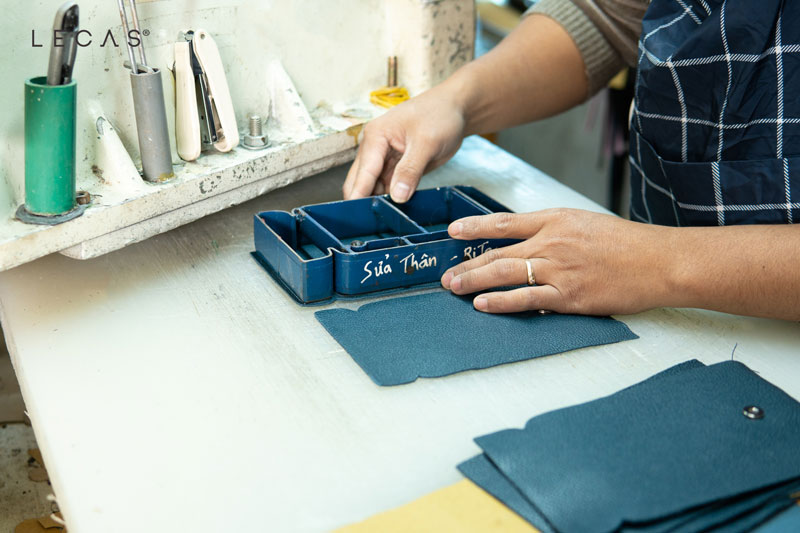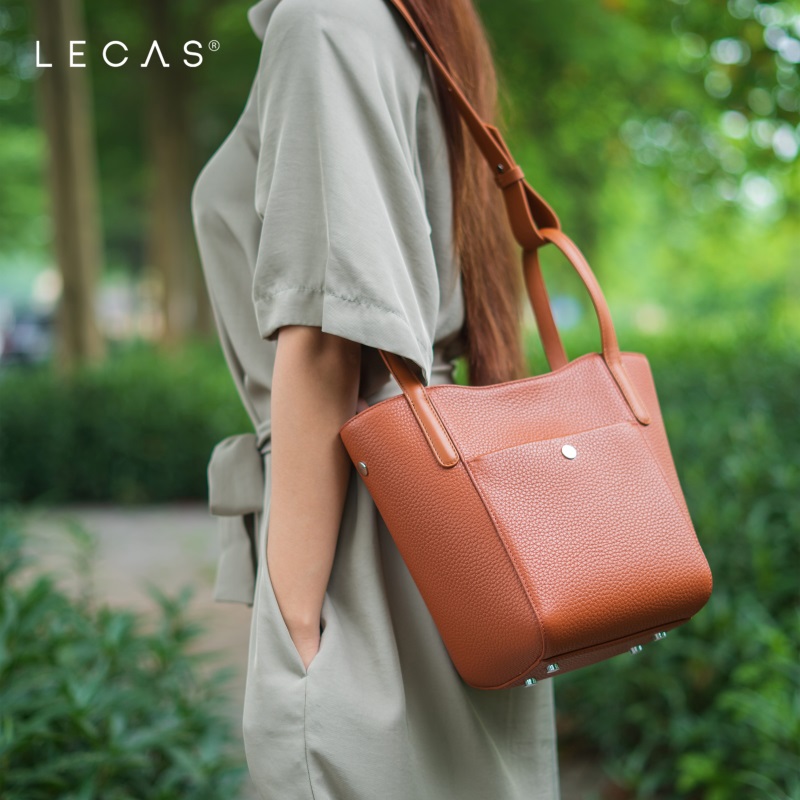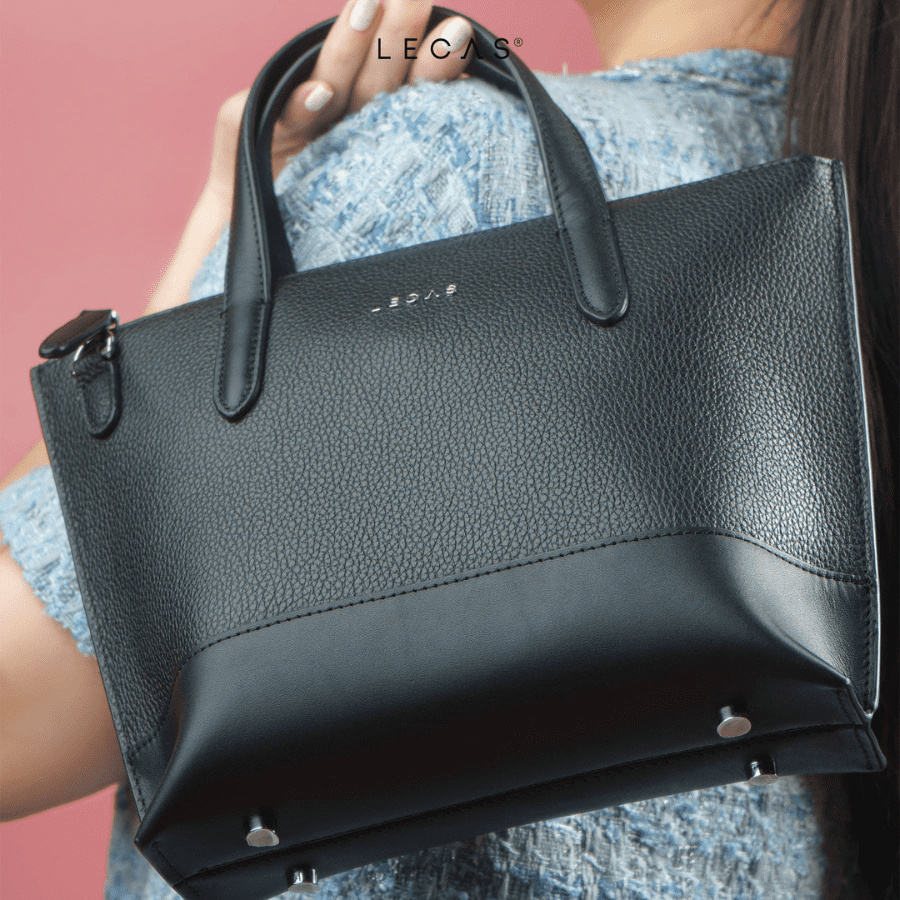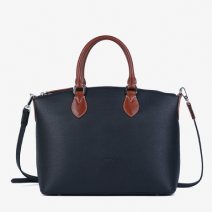Full grain leather is a top choice for making high-quality leather products. It’s the outermost layer of an animal hide, known for its durability and unique natural patterns. This article will guide you through the process of making products with full grain leather, from understanding what it is to crafting and caring for the final product.
Key Takeaways
- Full grain leather is the strongest and most durable type of leather because it includes the entire grain layer.
- The unique markings on full grain leather, like scars and wrinkles, make each piece one-of-a-kind.
- Traditional and modern tanning methods are used to treat full grain leather while keeping its natural qualities intact.
- Crafting products from full grain leather involves careful cutting, stitching, and finishing to enhance its natural beauty.
- Full grain leather products, like handbags and belts, are not only durable but also develop a beautiful patina over time.
Understanding Full Grain Leather
Characteristics of Full Grain Leather
Full grain leather is the top layer of an animal hide, minimally processed to keep its natural beauty. Unlike other types, it retains all its original markings, including wrinkles, scars, and insect bites. These markings are not flaws but a testament to the animal’s life, making each piece unique. Full grain leather is known for its strength and durability, as it includes the entire grain layer, which is the toughest part of the hide.

Differences Between Full Grain and Other Leathers
Full grain leather stands out from other types like corrected grain and top grain leather. Corrected grain leather undergoes a buffing process to remove imperfections, resulting in a smoother surface. Top grain leather is also sanded and refinished, making it thinner and more pliable. In contrast, full grain leather retains its natural thickness and strength, making it more durable and long-lasting.
Why Choose Full Grain Leather?
Choosing full grain leather means opting for quality and longevity. This type of leather ages beautifully, developing a rich patina over time. It is also more breathable, allowing air to circulate and preventing moisture buildup. For those who value craftsmanship and excellence, full grain leather is the ultimate choice. It tells a story and adds a touch of individuality to every product made from it.
Explore the intricate 9-step leather goods manufacturing process by LECAS, emphasizing craftsmanship and excellence.
The Sourcing and Selection of Hides
Selecting the Best Hides
When it comes to full grain leather, the selection of hides is crucial. We begin by choosing hides that are free from major imperfections. These hides are often sourced from mature animals, as their skin is thicker and more durable. The hides are then stored in a Beam House, packed in rock salt for preservation. This process ensures that the hides remain in good condition until they are ready to be processed.
Ethical Sourcing Practices
Ethical sourcing is a cornerstone of our leather production. We prioritize suppliers who adhere to humane practices and sustainable farming. This not only ensures the welfare of the animals but also results in higher-quality hides. By focusing on ethical sourcing, we contribute to a more sustainable and responsible leather industry.
Challenges in Sourcing Full Grain Leather
Sourcing full grain leather comes with its own set of challenges. One of the main difficulties is finding hides that meet our high standards. Imperfections such as scars and insect bites are common, but they add to the unique character of full grain leather. Additionally, the demand for full grain leather often exceeds supply, making it a premium material. Despite these challenges, the end result is a product that is unparalleled in quality and durability.

The Tanning Process
The tanning process is a crucial step in transforming raw hides into durable and flexible leather. This stage involves several methods, each with its own unique characteristics and impacts. Let’s explore the traditional and modern techniques used in tanning, as well as their environmental implications.
Traditional Tanning Methods
Traditional tanning methods have been used for centuries and often involve natural ingredients. One common approach is vegetable tanning, which uses tannins extracted from tree bark and other plant sources. This method is known for producing leather with a rich, natural color and a distinct aroma. The process can take several weeks, allowing the tannins to fully penetrate the hide and create a durable material.
Modern Tanning Techniques
In contrast, modern tanning techniques often utilize chemical agents to speed up the process. Chromium tanning is the most widely used method today, involving the use of chromium salts. This technique can produce leather in a matter of days, making it more efficient for large-scale production. However, it also results in a different texture and color compared to vegetable-tanned leather.
Environmental Impact of Tanning
The environmental impact of tanning varies depending on the method used. Vegetable tanning is generally considered more eco-friendly, as it relies on natural materials and produces less harmful waste. On the other hand, chromium tanning can have significant environmental consequences if not managed properly. The disposal of chromium-laden waste can lead to soil and water contamination, posing risks to both ecosystems and human health.
Understanding the tanning process is essential for appreciating the quality, durability, and value of full grain leather products. By choosing ethically sourced and responsibly tanned leather, we can enjoy beautiful and long-lasting items while minimizing our environmental footprint.
Crafting Leather Products
Crafting leather products from full grain leather is a meticulous process that requires skill and precision. Each step is crucial to ensure the final product is both durable and aesthetically pleasing.
Applications of Full Grain Leather
Full grain leather’s natural beauty, durability, and timeless elegance make it a premium choice for luxury goods. Its unique characteristics make it suitable for a variety of high-end applications, each benefiting from the material’s inherent qualities.
Luxury Handbags
For those who appreciate the finer things, full grain leather handbags are a true status symbol. These bags exude a timeless elegance with a touch of rustic charm. The natural markings on the leather add a touch of individuality, ensuring no two bags are exactly alike. Full grain leather’s breathability also prevents stuffiness and moisture build-up, making it a comfortable and practical choice for everyday use. As the leather ages, it develops a beautiful patina, further enhancing the bag’s unique character and value.

Private Label Trapezoidal Bag With Large Straps Manufacturer
Durable Belts and Wallets
Full grain leather’s strength and resistance to wear and tear make it ideal for belts and wallets. These everyday essentials endure constant use and friction, and full grain leather’s durability ensures they’ll withstand the test of time. Over time, full grain leather belts and wallets develop a beautiful patina, adding to their character and becoming cherished companions.

Customized Leather Card Wallet Manufacturing in Vietnam
High-End Furniture
In the realm of interior design, full grain leather is often used for high-end furniture pieces. Its natural beauty and durability make it a preferred choice for sofas, chairs, and other upholstered items. The leather’s ability to develop a patina over time adds to the furniture’s aesthetic appeal, making each piece unique. Additionally, full grain leather’s breathability and comfort make it an excellent choice for furniture that is both stylish and functional.
Full grain leather’s natural beauty, durability, and timeless elegance make it a premium choice for luxury goods.
Advantages of Full Grain Leather Products
Durability and Longevity
Full grain leather is known for its exceptional strength and long-lasting nature. This type of leather retains the entire grain layer, making it tough and resistant to wear and tear. Over time, it can withstand daily use and still maintain its integrity, making it a preferred choice for items like belts and wallets.
Aesthetic Appeal
The natural beauty of full grain leather is unmatched. Each piece carries unique markings, such as wrinkles and scars, that tell a story. These natural variations add a touch of individuality to every product, ensuring no two items are exactly alike. The leather’s subtle sheen and rich texture enhance its visual appeal, making it a favorite for luxury goods.
Developing a Patina Over Time
One of the most sought-after qualities of full grain leather is its ability to develop a patina. As the leather ages, it acquires a beautiful, rich patina that adds to its character and charm. This aging process not only enhances the leather’s appearance but also increases its value, making it a cherished material for high-end products.
Full grain leather products are not just items; they are investments that grow more beautiful with time.
Caring for Full Grain Leather
To keep your full grain leather looking its best, regular cleaning is essential. Use a soft, dry cloth for daily dusting and a slightly damp cloth for occasional deeper cleaning. For more stubborn stains, warm water can help remove dirt without damaging the leather.

Customized Mini Leather Tote Bag Manufacturing In Vietnam
Full grain leather is durable but can still be prone to scratches and scuffs. Avoid using hard brushes or abrasive cloths, as these can cause more harm than good. Instead, consider using a leather conditioner to maintain its suppleness and protect against wear and tear.
Over time, full grain leather develops a beautiful patina, but it may also show signs of wear. Minor scuffs can often be removed by gently rubbing the area with a moistened finger. For more significant damage, professional restoration services can help bring your leather back to life.
Remember, full grain leather can be prone to scratching if you aren’t careful with your maintenance.
Taking care of full grain leather is simple and rewarding. Regularly clean it with a soft cloth and use a leather conditioner to keep it looking new. Avoid exposing it to water and direct sunlight to prevent damage. For more tips and high-quality leather products, visit our website today!
Conclusion
In summary, full grain leather stands out as a top-tier material in the leather industry due to its durability, natural beauty, and unique characteristics. The minimal processing it undergoes preserves its original markings, making each piece distinct and full of character. Whether used in luxury handbags, durable belts, or wallets, full grain leather products offer a blend of elegance and practicality. Investing in full grain leather means choosing quality and longevity, ensuring that your leather goods will not only serve you well but also age gracefully, developing a rich patina over time. By understanding the process and benefits of full grain leather, consumers can make informed decisions and appreciate the craftsmanship that goes into creating these exceptional products.
Read more: Reliable private label handbags manufacturers from Vietnam LECAS Leather





BLOG
Maybe You Are Interested
Exploring the Inner Workings of a Leather Bag Factory
Ever wondered how your favorite leather bag is made? In this article LECAS Leather will...
Choosing the Best Leather Wallet Manufacturer: A Comprehensive Guide
Picking the best leather wallet manufacturer is super important if you want a wallet that...
Top Vegan Leather Manufacturers Paving the Way for Sustainable Fashion
With the world becoming more eco-friendly, the fashion industry is also making changes. Vegan leather...
Top Trends Among Leather Wallet Manufacturers
In 2024, leather wallet manufacturers are embracing new trends that blend style with functionality. From...
Top Trends From the Leading Manufacturer of Leather Products in 2024
In 2024, the leather goods industry is buzzing with new trends. The leading manufacturer of...
The Future of Manufacturing Leather Products: Trends and Innovations
The leather manufacturing industry is rapidly evolving, blending old techniques with new technologies. This shift...